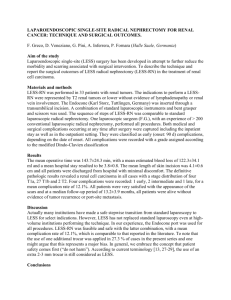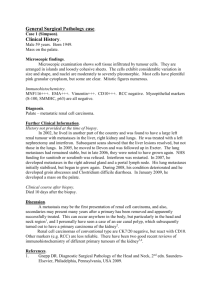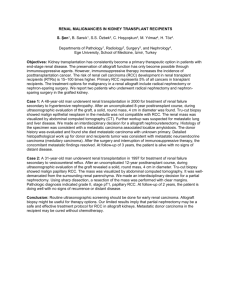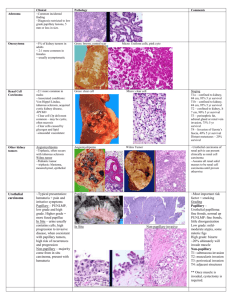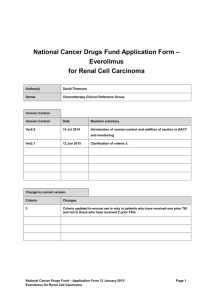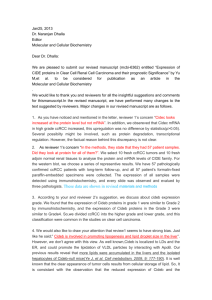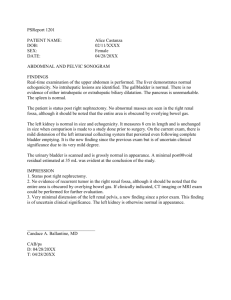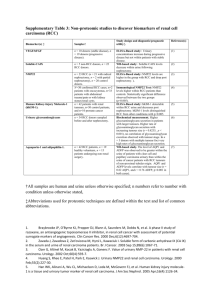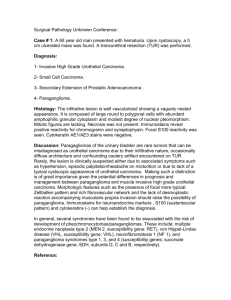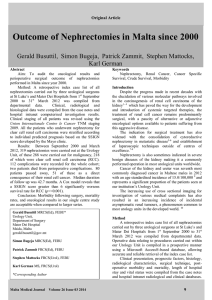Partial nephrectomy reduces mortality not related to renal cancer
advertisement
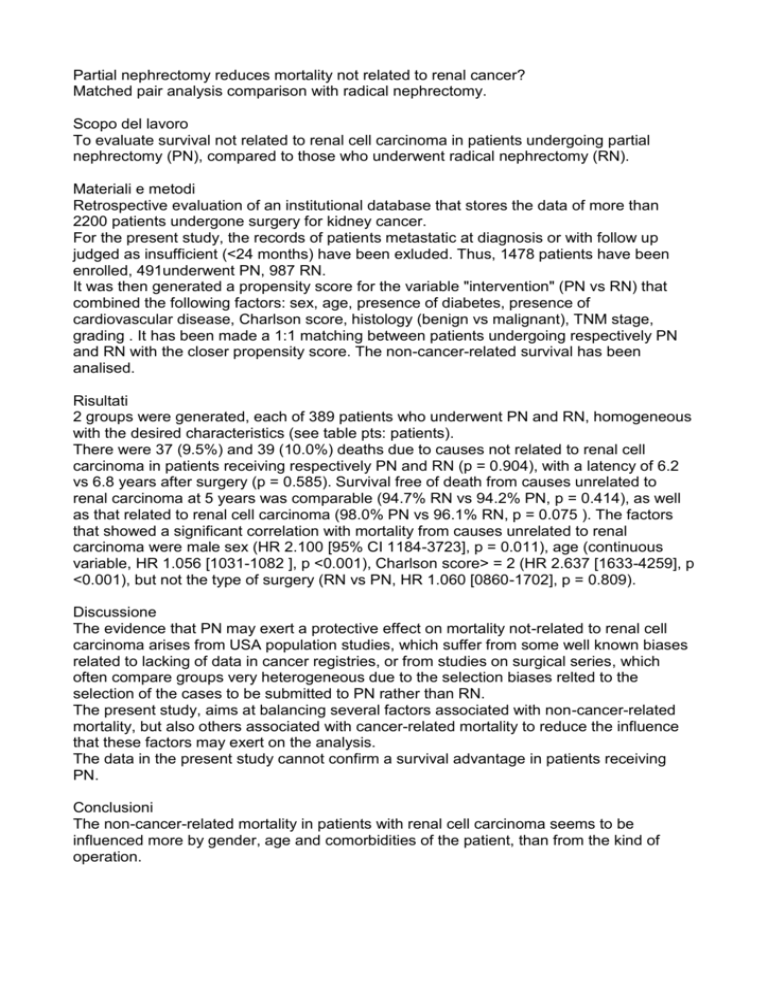
Partial nephrectomy reduces mortality not related to renal cancer? Matched pair analysis comparison with radical nephrectomy. Scopo del lavoro To evaluate survival not related to renal cell carcinoma in patients undergoing partial nephrectomy (PN), compared to those who underwent radical nephrectomy (RN). Materiali e metodi Retrospective evaluation of an institutional database that stores the data of more than 2200 patients undergone surgery for kidney cancer. For the present study, the records of patients metastatic at diagnosis or with follow up judged as insufficient (<24 months) have been exluded. Thus, 1478 patients have been enrolled, 491underwent PN, 987 RN. It was then generated a propensity score for the variable "intervention" (PN vs RN) that combined the following factors: sex, age, presence of diabetes, presence of cardiovascular disease, Charlson score, histology (benign vs malignant), TNM stage, grading . It has been made a 1:1 matching between patients undergoing respectively PN and RN with the closer propensity score. The non-cancer-related survival has been analised. Risultati 2 groups were generated, each of 389 patients who underwent PN and RN, homogeneous with the desired characteristics (see table pts: patients). There were 37 (9.5%) and 39 (10.0%) deaths due to causes not related to renal cell carcinoma in patients receiving respectively PN and RN (p = 0.904), with a latency of 6.2 vs 6.8 years after surgery (p = 0.585). Survival free of death from causes unrelated to renal carcinoma at 5 years was comparable (94.7% RN vs 94.2% PN, p = 0.414), as well as that related to renal cell carcinoma (98.0% PN vs 96.1% RN, p = 0.075 ). The factors that showed a significant correlation with mortality from causes unrelated to renal carcinoma were male sex (HR 2.100 [95% CI 1184-3723], p = 0.011), age (continuous variable, HR 1.056 [1031-1082 ], p <0.001), Charlson score> = 2 (HR 2.637 [1633-4259], p <0.001), but not the type of surgery (RN vs PN, HR 1.060 [0860-1702], p = 0.809). Discussione The evidence that PN may exert a protective effect on mortality not-related to renal cell carcinoma arises from USA population studies, which suffer from some well known biases related to lacking of data in cancer registries, or from studies on surgical series, which often compare groups very heterogeneous due to the selection biases relted to the selection of the cases to be submitted to PN rather than RN. The present study, aims at balancing several factors associated with non-cancer-related mortality, but also others associated with cancer-related mortality to reduce the influence that these factors may exert on the analysis. The data in the present study cannot confirm a survival advantage in patients receiving PN. Conclusioni The non-cancer-related mortality in patients with renal cell carcinoma seems to be influenced more by gender, age and comorbidities of the patient, than from the kind of operation.
